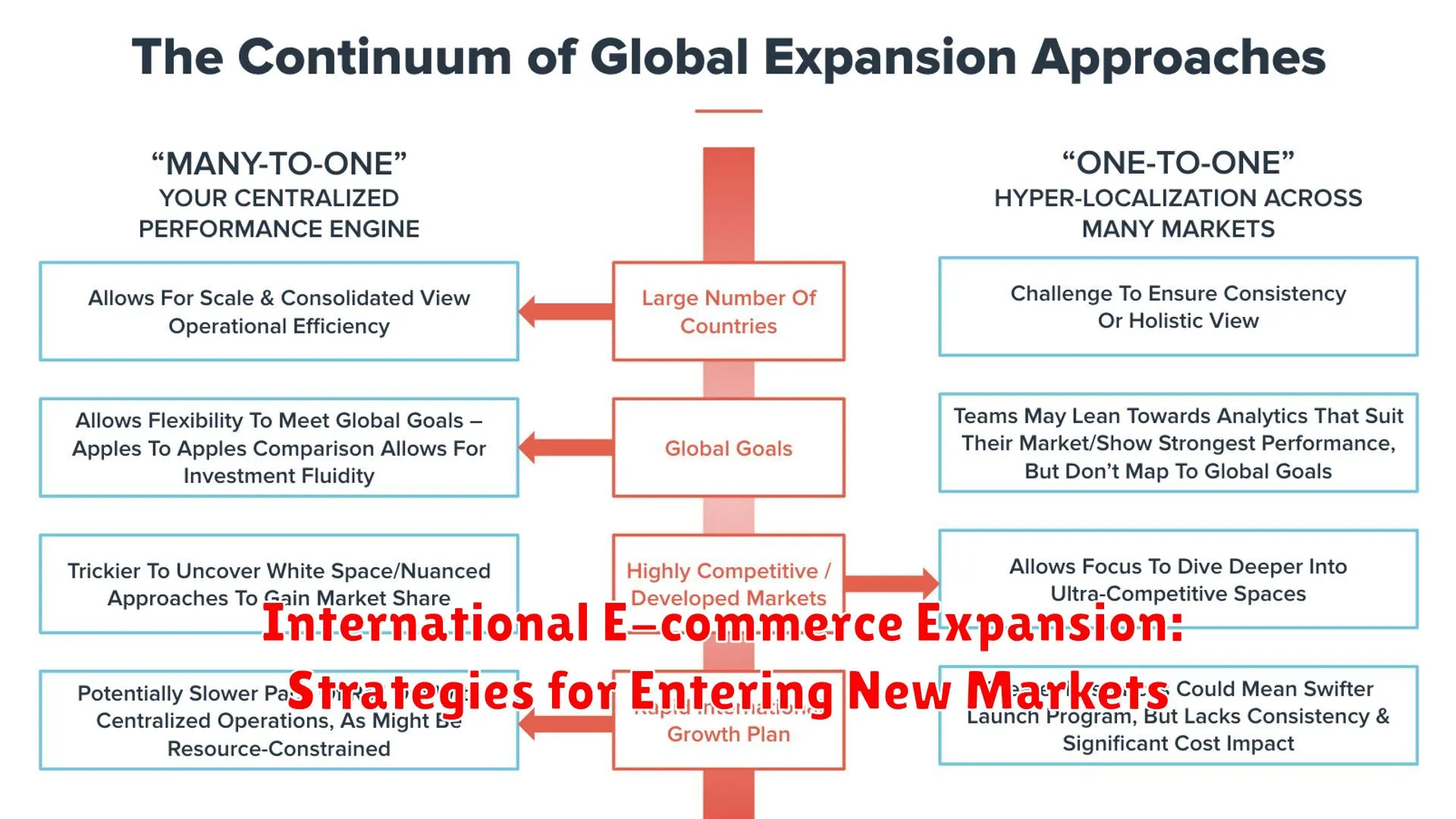Expanding international e-commerce requires strategic planning. This article explores key strategies for entering new markets successfully, helping businesses navigate the complexities of global expansion.
Assessing Market Potential for International Expansion
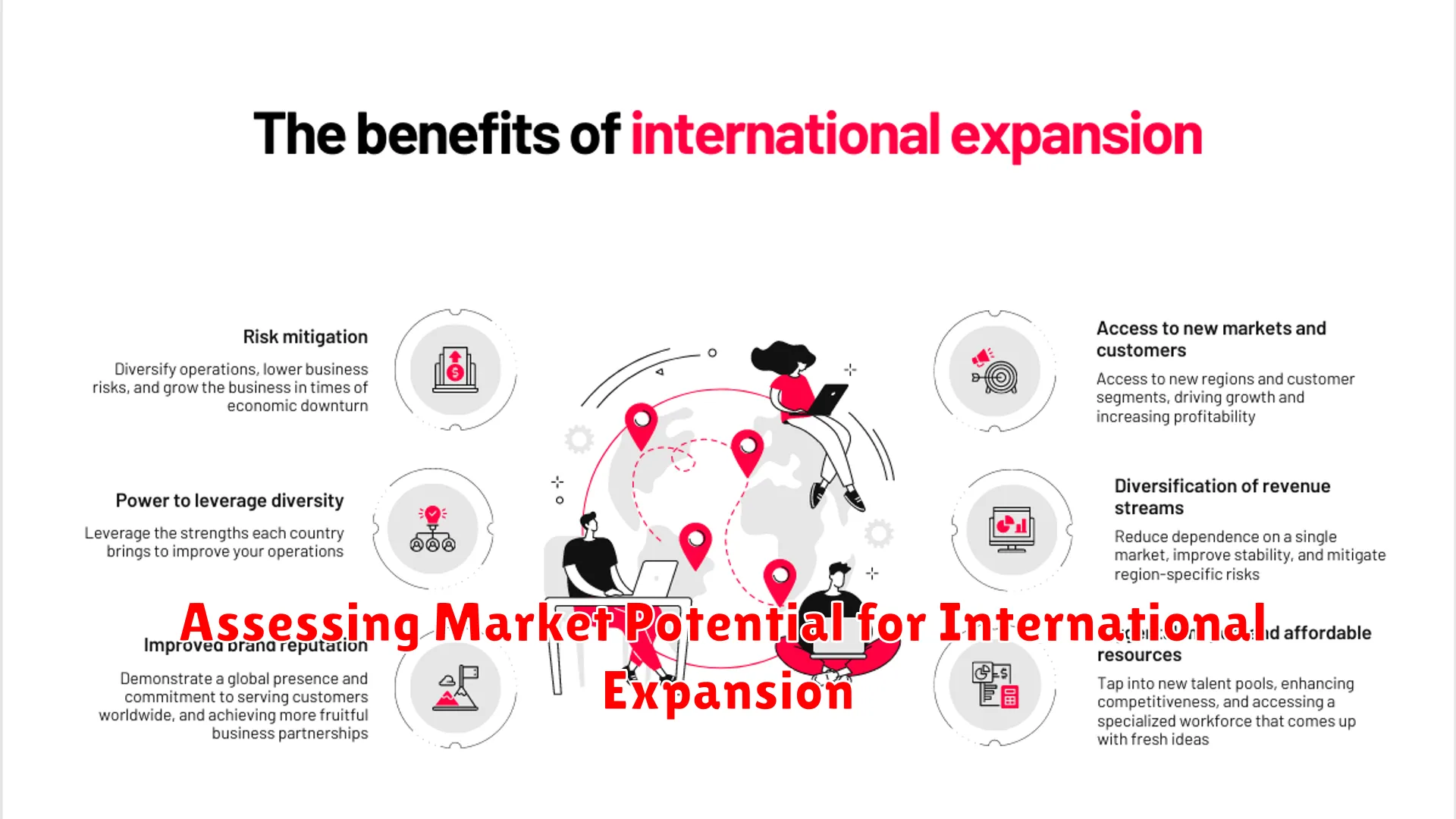
Expanding into international markets can be a lucrative opportunity for e-commerce businesses looking to grow their reach. However, before entering new markets, it is crucial to assess the market potential to ensure a successful expansion strategy.
One key aspect of assessing market potential is conducting thorough market research to understand the demand for your products or services in the target market. This involves analyzing market size, consumer behavior, competition, and potential barriers to entry.
Additionally, evaluating the economic environment of the target market is essential. Factors such as economic stability, GDP growth, and disposable income levels can impact the purchasing power of consumers and influence market potential.
Assessing the regulatory environment is also critical when considering international expansion. Understanding the legal requirements, tax regulations, and trade policies of the target market can help mitigate risks and ensure compliance with local laws.
Furthermore, analyzing cultural differences and consumer preferences in the target market is vital. Adapting your marketing strategies, product offerings, and customer service to align with the local culture can significantly impact the success of your expansion efforts.
In conclusion, a comprehensive assessment of market potential is essential for successful international expansion in e-commerce. By thoroughly analyzing market factors and understanding the nuances of the target market, businesses can develop effective strategies to enter new markets and capitalize on growth opportunities.
Navigating Legal and Regulatory Challenges

When expanding internationally through e-commerce, businesses must be prepared to navigate various legal and regulatory challenges in different markets. Understanding and complying with the laws and regulations of each target country is crucial to a successful expansion strategy.
1. Research and Compliance: Before entering new markets, it is essential for companies to conduct thorough research on the legal landscape of the target country. This includes understanding tax laws, consumer protection regulations, data privacy laws, and any industry-specific regulations that may apply.
2. Partner with Legal Experts: To ensure compliance and mitigate risks, businesses should consider partnering with local legal experts who are well-versed in the legal requirements of the target market. Legal advisors can provide valuable guidance and help navigate complex regulatory environments.
3. Customize Terms and Conditions: It is important to tailor terms and conditions, privacy policies, and contracts to align with the legal requirements of each market. This may include specifying shipping terms, return policies, and payment methods that comply with local laws.
4. Stay Updated: Laws and regulations in the e-commerce sector are constantly evolving. Businesses need to stay informed about any changes or updates to legal requirements in the markets they operate in to ensure ongoing compliance.
Adapting to Local Consumer Preferences
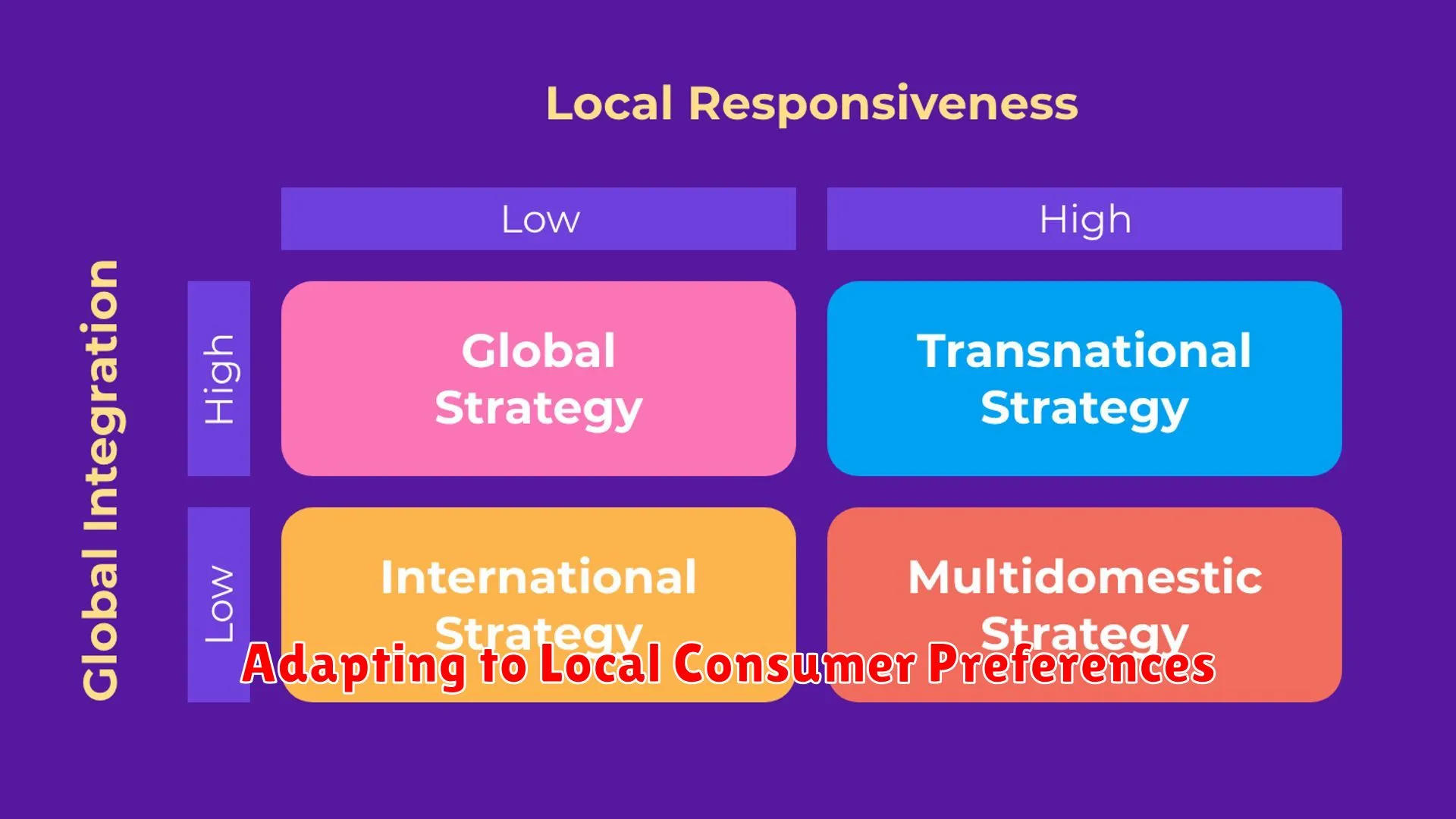
When expanding an international e-commerce business into new markets, one key strategy is adapting to local consumer preferences. Understanding the cultural, social, and economic nuances of the target market is crucial for success.
Research plays a vital role in this process. Conducting thorough market research to identify the preferences, behaviors, and purchasing habits of local consumers can provide valuable insights for tailoring products and services to meet their needs.
Localization is another important aspect to consider. This involves customizing your website, marketing materials, and customer service to resonate with the target market. Language, currency options, and payment methods should be adapted to enhance the user experience.
Building relationships with local influencers, partners, and suppliers can also help in understanding consumer preferences. Collaborating with trusted entities in the new market can provide credibility and insight into the consumer mindset.
Feedback is key to continuous improvement. Encouraging feedback from local customers and analyzing their suggestions can help refine your offerings and services to better align with their preferences.
In conclusion, adapting to local consumer preferences is essential for the successful expansion of an international e-commerce business. By prioritizing research, localization, relationship building, and feedback, companies can effectively enter new markets and establish a strong connection with their target audience.
Establishing Logistics and Supply Chain Networks

When expanding internationally in the e-commerce sector, establishing robust logistics and supply chain networks is crucial for successful market entry. These networks form the backbone of operations, ensuring efficient movement of products from the point of origin to the end consumers. Here are some key strategies to consider:
- Market Research: Conduct thorough research on the target market to understand consumer preferences, local regulations, and distribution channels. This information will guide the design of the logistics network.
- Partnerships: Collaborate with local logistics providers and suppliers to leverage their expertise and infrastructure. Building strong partnerships can help streamline processes and address logistical challenges.
- Technological Integration: Implement advanced technologies such as inventory management systems, tracking software, and data analytics tools to optimize supply chain efficiency and visibility.
- Customs Compliance: Ensure compliance with international trade regulations and customs procedures to prevent delays and minimize shipping costs. A clear understanding of import/export requirements is essential.
- Warehouse Optimization: Strategically locate warehouses and fulfillment centers to reduce shipping times and costs. Adopting just-in-time inventory practices can prevent overstocking and enhance responsiveness.
Marketing and Branding Strategies for Global Markets

When expanding internationally in the e-commerce sector, it’s essential to create effective marketing and branding strategies tailored for global markets. These strategies are crucial for successfully entering new markets and engaging with diverse audiences. Here are key considerations:
1. Understand Local Consumer Behavior
Before entering a new market, conduct thorough research to understand the local consumer behavior. This includes preferences, buying habits, cultural nuances, and language considerations. Adapting your marketing approach based on these insights will help establish a connection with the target audience.
2. Localization is Key
Localization goes beyond language translation. It involves adapting your website, content, and marketing materials to resonate with the target market. Customizing product descriptions, images, and even payment methods can enhance the shopping experience and build trust with local consumers.
3. Embrace Digital Marketing Channels
Utilize various digital marketing channels such as social media, search engine optimization (SEO), and email marketing to reach a global audience. Tailor your campaigns to suit the preferences of each market, leveraging data analytics to track performance and optimize strategies.
4. Build a Strong Brand Presence
A strong brand presence is essential for gaining credibility and loyalty in global markets. Develop a consistent brand identity that resonates with your target audience across different regions. Engage in storytelling and customer-centric communication to differentiate your brand.
5. Foster Cross-Cultural Understanding
Recognize the diversity of global markets and strive to foster cross-cultural understanding. Respect and embrace cultural differences in your marketing initiatives to build long-lasting relationships with customers worldwide.
Overcoming Language and Cultural Barriers

When expanding your e-commerce business into international markets, one of the key challenges you may face is overcoming language and cultural barriers. These barriers can significantly impact your success in new markets and hinder effective communication with your target audience.
1. Localization is Key: To overcome language barriers, it is essential to localize your website and marketing materials. This involves translating content into the local language and adapting product descriptions, prices, and payment methods to align with the market preferences.
2. Understand Cultural Nuances: Cultural differences can greatly influence consumer behavior. It’s crucial to conduct thorough research on the target market’s customs, traditions, and etiquette to avoid any misinterpretations or misunderstandings that may impact your brand reputation.
3. Offer Multilingual Customer Support: Providing customer support in the local language can enhance trust and credibility. Consider offering multilingual customer service channels, such as live chat or phone support, to assist customers with their inquiries or issues promptly.
4. Collaboration with Local Experts: Partnering with local influencers, agencies, or consultants who understand the market can provide valuable insights and guidance on navigating cultural nuances, marketing strategies, and consumer preferences.
5. Embrace Diversity and Inclusivity: Showcasing diversity in your marketing campaigns and product offerings demonstrates your respect for various cultures and can help you connect with a wider audience. Embrace inclusivity in your branding to appeal to diverse customer segments.
Case Studies: E-commerce Brands Succeeding Internationally
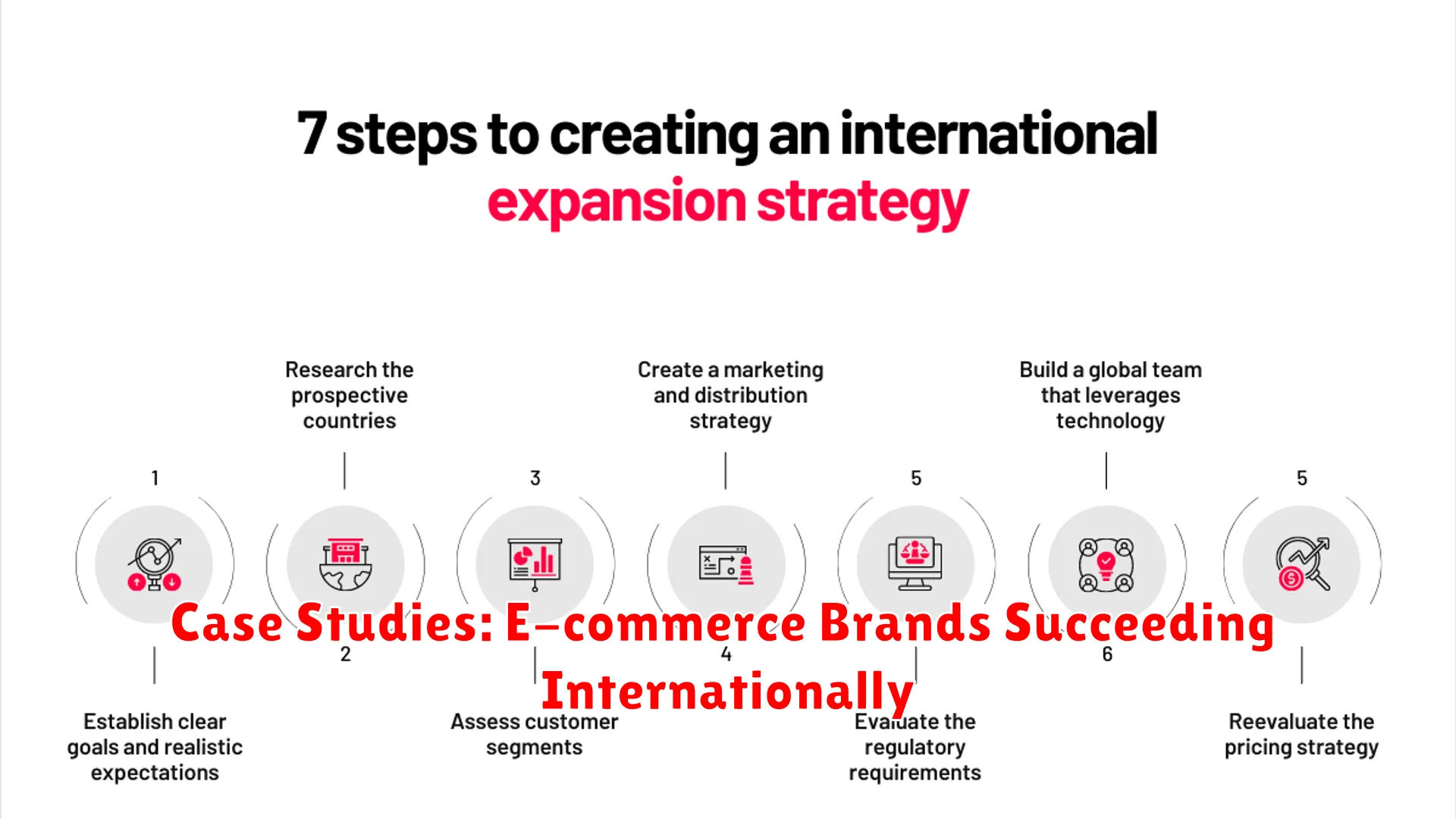
In the realm of international e-commerce expansion, several brands have successfully navigated the challenges of entering new markets. Let’s delve into some insightful case studies that highlight strategies employed by e-commerce brands to thrive globally:
Cross-Border Marketing Tactics
Brand X: By tailoring their marketing strategies to cater to local preferences while maintaining a consistent global brand image, Brand X successfully expanded into multiple international markets. Their focus on localized content and targeted advertising helped drive engagement and conversions.
Adaptation to Cultural Nuances
Brand Y: Understanding the cultural nuances of each market they entered, Brand Y adopted a flexible approach to product offerings and messaging. By embracing regional trends and customs, they built a strong connection with consumers in diverse markets.
Strategic Partnerships and Localization
Brand Z: Leveraging strategic partnerships with local distributors and influencers, Brand Z effectively localized their operations. By collaborating with established players in new markets, they gained credibility and accelerated their growth trajectory.
Conclusion: The Path to Successful Global E-commerce
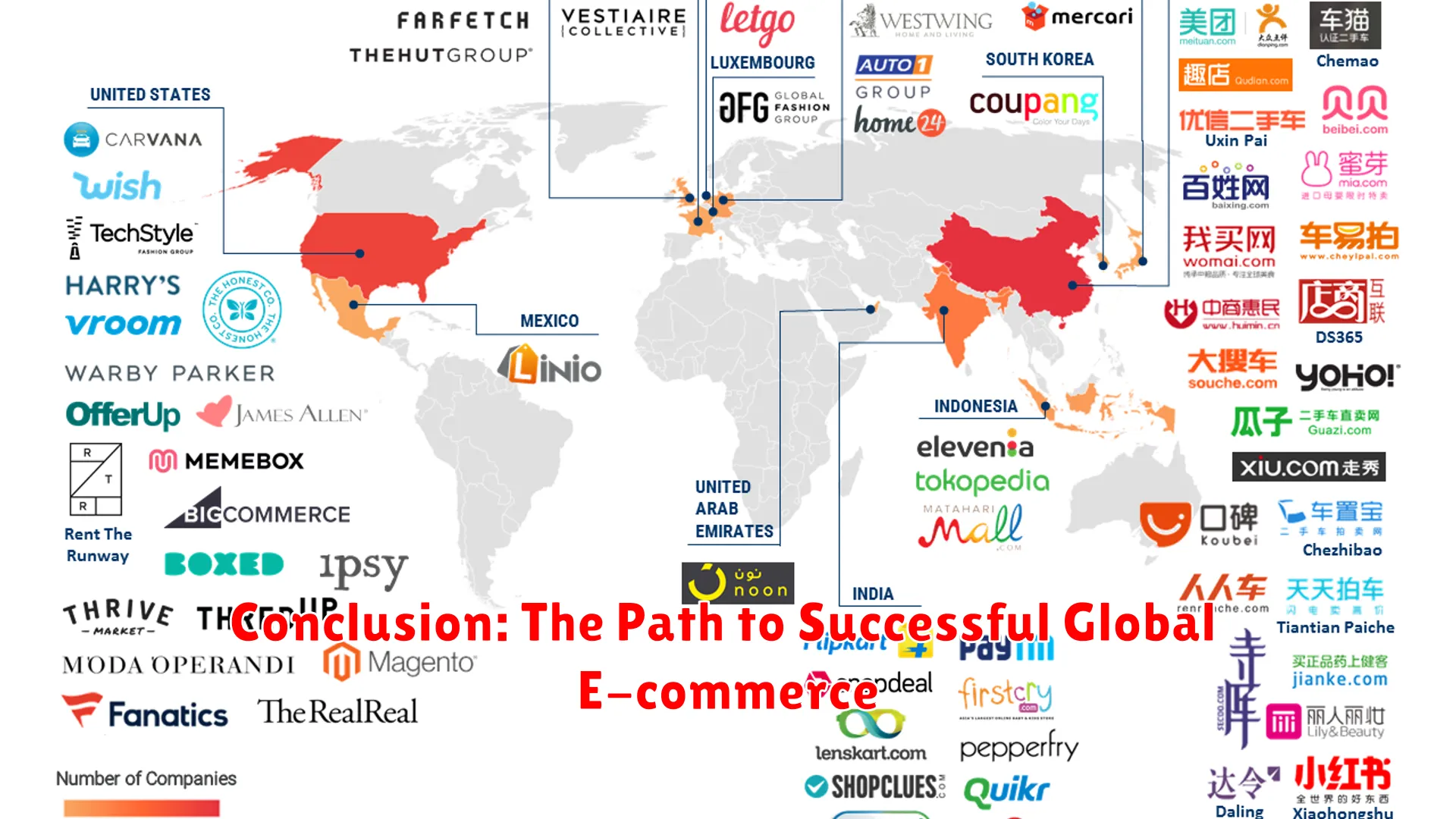
Expanding internationally through e-commerce can offer numerous opportunities for businesses to grow and reach new markets. To successfully venture into global e-commerce, companies need to adopt strategic approaches tailored to each market they target. These strategies require careful planning, market research, and adaptability to diverse cultural and regulatory environments.
One key aspect of successful global e-commerce expansion is building a strong online presence that reflects the brand’s values while catering to the specific preferences of the target market. Localization of the website, language, currency, and payment methods are crucial factors that can significantly impact customer trust and conversion rates.
Moreover, establishing reliable logistics and distribution networks is essential for ensuring timely deliveries and customer satisfaction. Collaborating with local partners, leveraging technology, and implementing efficient supply chain management practices are crucial for overcoming logistical challenges in international markets.
Additionally, leveraging data analytics and customer insights can help businesses make informed decisions, optimize marketing strategies, and enhance the overall customer experience. By continuously monitoring performance metrics and understanding consumer behavior, companies can adapt their e-commerce strategies to meet evolving market demands.
In conclusion, successful global e-commerce expansion requires a comprehensive approach that integrates market research, localization, logistics optimization, and data-driven decision-making. By focusing on these key areas and staying agile in response to market dynamics, businesses can position themselves for sustained growth and success in the global marketplace.
Conclusion
In conclusion, successful international e-commerce expansion requires a tailored market entry strategy, localized content, strong logistics, and customer service to adapt to diverse global markets.

